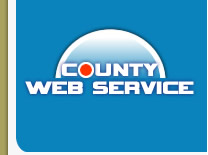![]()
![]()
![]()
![]()
![]()


![]()
![]()
![]()
![]()
![]()
![]()
![]()
|
Articles What is RDFRemember when the internet consisted of nothing more than a few simple web sites formatted in basic HTML? Web design was so easy. You could just slap some text into a file, insert some HTML tags into the document to tell the web browser how the text should appear and what the structure of the page should be, and presto, the job was finished. As time went on, web design got harder. Businesses that depended upon their internet storefronts to make a living began to present web designers with impossible projects that were too difficult to complete with HTML. The data being used and the designs that were being implemented for websites required more versatile programming specifications. Another factor that turned site design into a quandary was the advent of the wireless revolution. Wireless devices often have web browsers that work very differently from the ones installed on an ordinary desktop PC. Many of these browsers are not fully compatible with many elements of the HTML programming language. As a result, people surfing the net on their wireless gadgets can not view many websites that are created using only HTML. To solve the dilemma, languages and specifications that could be adapted across any platform were created. The most important new language introduced was XML. XML was a language that defined data without telling the web browser how to display it, as opposed to HTML, which forced data to be displayed a certain way. This enabled data to be viewed on virtually any system because an XML file was a simple text file that could be understood and displayed on any browser. Now that you understand how and why web design has changed, you are now ready for a brief introduction to the main topic of this article, RDF (Resource Description Framework). RDF was created to provide a way for information to be read and interpreted across all computers. It is written in XML, which, as previously stated, has cross-platform compatibility. The Resource Definition Framework is a lot like the meta tags that are used to describe an HTML page. RDF uses tags such as description, author, and homepage to define the web page. It starts with an XML namespace to define the page as belonging to the Resource Definition Framework, and then defines a number of different elements to describe the page. In an RDF document, the description is the main tag and is referred to as a resource; a resource is the term used to describe any element in the document that can have a URL. At the next level are properties, which are any resource that has a name, such as author or homepage. Each property has a value; the name of the author would be the property value of the author resource, and the web address would be the property value of the homepage resource. So, RDF is basically the equivalent of HTML metadata. It enables the web designer to set forth the description, keywords, and URL of a certain webpage using the XML language, which can be understood by any web browser because. But, unlike HTML metadata, the Resource Definition Framework encompasses much more; it can used to define lists, sequences, groups of data, and more. It is absolutely necessary for all web designers to learn to make use of RDF, as it has already been officially adopted by the World Wide Web Consortium (W3C) as a programming standard. Now that XML has been accepted as the standard for describing and defining data, not being able to use all facets of XML programming, such as RDF, means that the web sites you create will be considered substandard. If you have never used it before, I recommend you enroll in some courses at a local college or computer programming institute to bring you up to date. If you are already experienced in web design, learning these new languages and specifications is not too hard because the syntax is fairly simple to master if you have a good teacher. Jim Pretin is the owner of http://www.forms4free.com, a service that helps programmers make email forms. Web Services The Scam That Almost Got Me - I've had to deal with clients who were less than willing to pay, whose checks bounced, and who had unrealistic expectations. All about Blogs and Blogging - Blogging has become a part of day-to-day life. Dedicated Hosting Window Web Hosting Asp Net Web Hosting - Web hosting is a elementary internet service that allows individuals, and to determine a cybernetic presence on the World Wide Web. Dedicated Server Web Hosting Top Ten Hosting Asp Net Hosting - Web is a undeveloped internet service that allows , organizations and to create a virtual presence on the World Wide Web. Asp Net Web Hosting Top Ten Hosting Dedicated Server Web Hosting - Web is a key internet service that allows individuals, organizations and to verify a implicit presence on the World Wide Web. more... |
![]()
![]()
ęCopyright 2025 County-web-serivice.com All rights reserved.
Unauthorized duplication in part or whole strictly prohibited by international
copyright law.
![]()